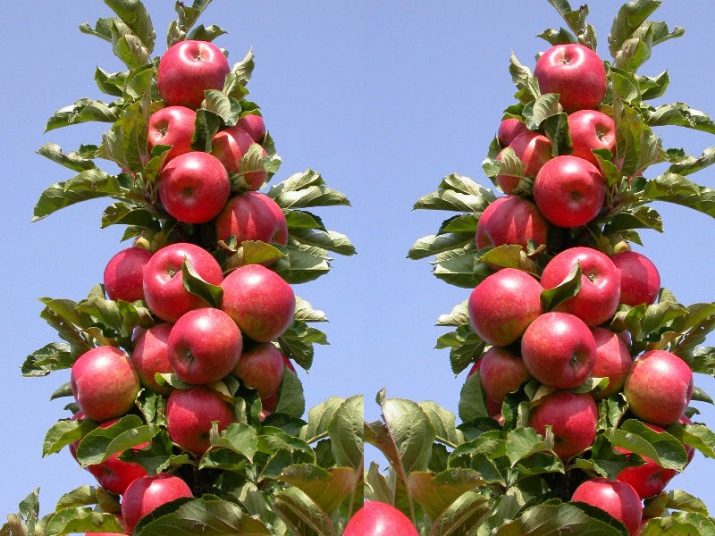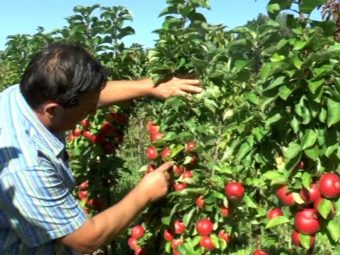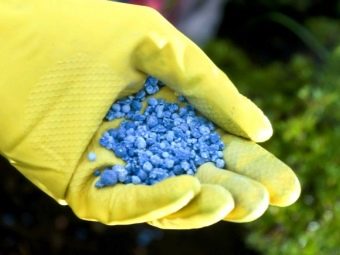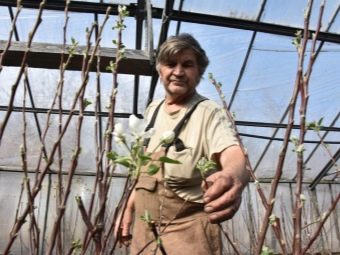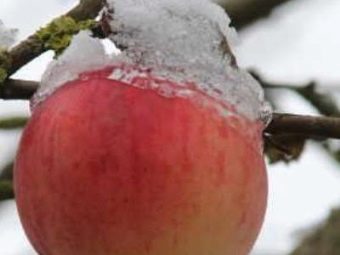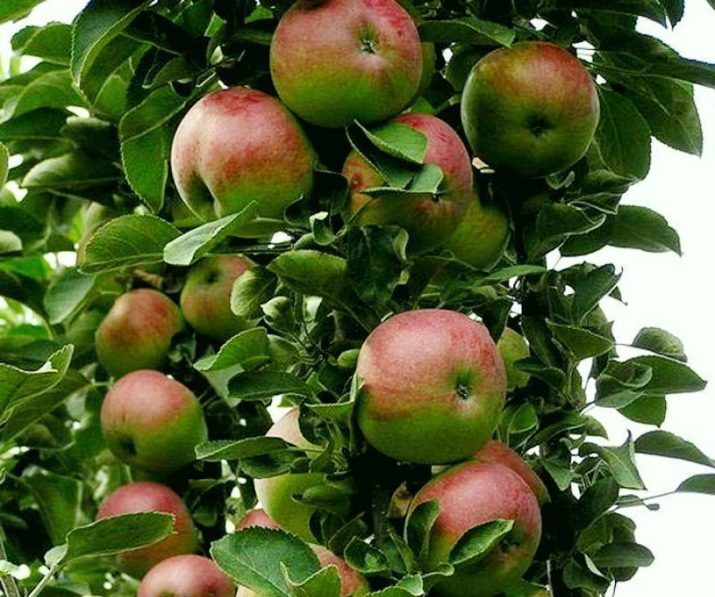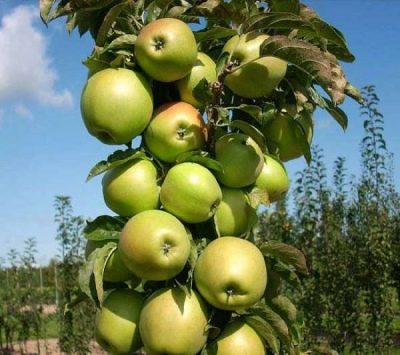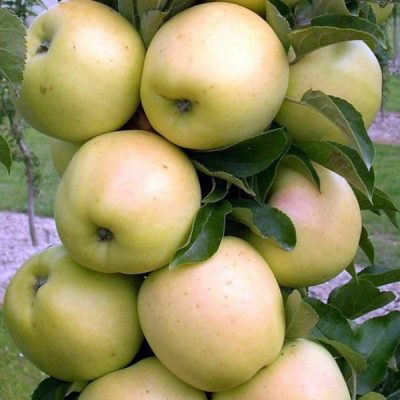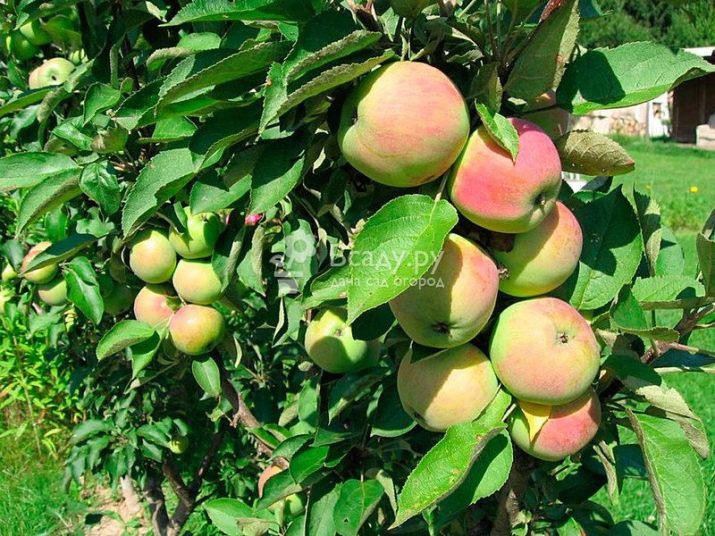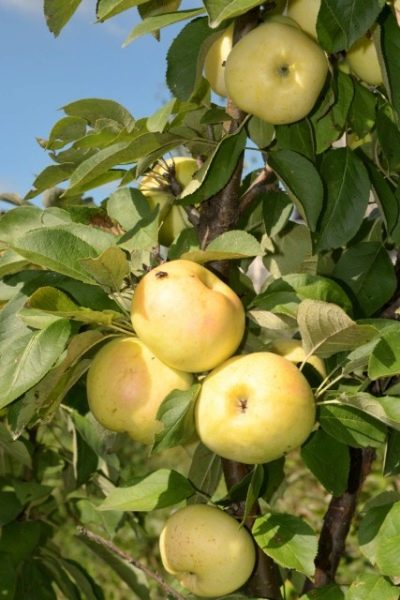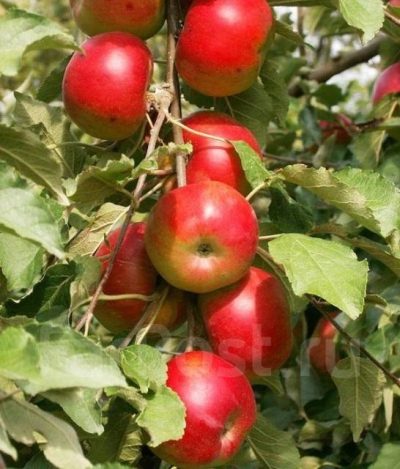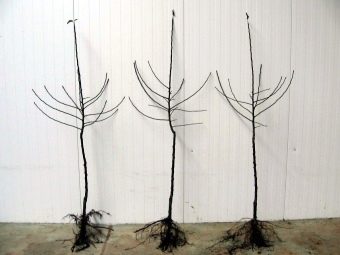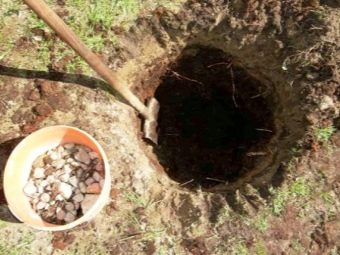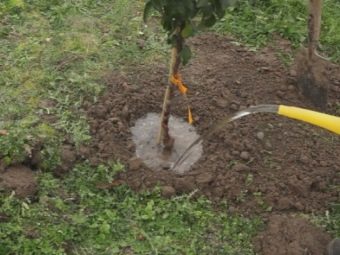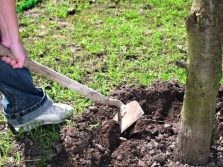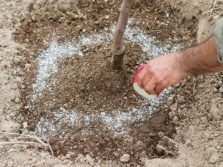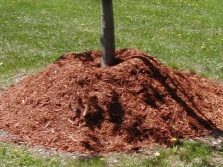Colony-shaped apple for the Leningrad region: the rules of planting and care
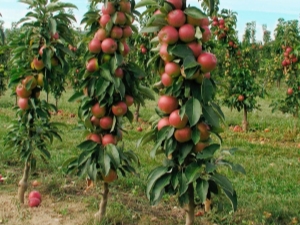
Choosing a variety of fruit crops for planting on the site, each summer resident or gardener wants the seedling to take root well and develop safely in the future. And from the adult tree is expected a long and abundant fruiting. In order for this to happen, it is important to choose an apple variety for which the climatic conditions of the growing area will be suitable. The article will discuss how to grow a columnar apple in the Leningrad region.
Characteristic view
For a start, it is worthwhile to get acquainted briefly with this relatively recently popular type of apple trees. The name of this subspecies comes from the specific form of the crown of the tree. Actually, talking about the crown in this case is not quite right. After all, the columnar apple trees have only small, very short twigs. The fruits are located directly around the trunk. Outwardly, this is just like a pillar or pillar hung with apples on all sides.
Now displayed many varieties of apples of this species. So you can not worry about the scarcity of choice. The taste qualities of the fruit, as well as the characteristics of the tree itself, are presented for every taste and for different growing conditions. The subspecies includes sweet varieties of apples, fragrant with sourness, and slightly astringent fruits of various sizes, color and degree of juiciness.
Before buying planting material, you only need to carefully familiarize yourself with the characteristics of the variety and select a suitable seedling for growing on your own plot.
This type of fruit trees has several features that distinguish the columnar apple trees from the habitual ones with branchy crowns.
- The big plus is that these trees bear fruit already 2-3 years later after planting. Among apple trees, and most other fruit crops, this is actually a record. Naturally, the temptation to try apples from a young tree makes the columnar subspecies so quickly very attractive to gardeners.
- The trees are low. Lack of sprawling crown makes them very overall. For a plot of small area, this option is very convenient. Between fruit trees and other plantations are not required to observe large distances.
- Caring for these apples is much easier and not so laborious. Processing, pruning and other procedures can be carried out from the ground, since the entire crown is in the zone of access of human growth.
It is worth noting that the reviews of gardeners on apple-shaped apple trees are very positive. This option is especially convenient for owners of small summer cottages in the suburbs. For low trees, "columns" is permissible compact landing. This allows you to grow in the garden several varieties of apples with different taste characteristics.
The climate of the region
The territory of the northwestern district of our country is not very suitable for growing many types of vegetables and fruit crops. This is due to specific, largely unfavorable features of the climate. Leningrad region refers to the territories of risky farming. The weather in the region is always very changeable, mostly cool and windy. Even in summer, hot days without rain fall out infrequently. Also large enough is the fluctuation of daily temperatures, which does not make life easier for garden crops.
In addition to the climate in the Leningrad Region, the soil is not very nutritious. In most of the territory, the fertile soil layer is only about 30 cm. In such conditions, summer residents and gardeners cannot do without constant fertilization. A big problem for agriculture is the increased humidity, frequent heavy rainfall. These factors lead to stagnant water in the soil and waterlogging of the soil. Also on the territory of the north-western region there is often a high level of groundwater.
In the suburban areas it is often necessary to drain the upper layers of the soil, to make the drainage of underground water flows.
Grade selection criteria
In addition to taking measures to improve cultivation conditions, it is important for gardeners to initially select those fruit crops that can adapt to the ungrave climate of the region. Beginning inexperienced gardeners and gardeners often make a very serious mistake when choosing a sapling. They focus on the taste of the fruits of the future apple. At the same time, the peculiarities of the variety, adaptability to one or another cultivation condition, simply completely disappear from the view and are not taken into account. Such a mistake often leads either to the death of a seedling, or to its very slow and difficult development. If the tree survives, it is likely that the quantity and quality of the crop will be unsatisfactory.
And the fault is ignoring the characteristics of the fruit crop and the requirements for the cultivation of a particular variety. So, when choosing a variety of columnar apple for cultivation in the Leningrad Region, the following criteria and characteristics should be taken into account.
- For regions with cold winters, the degree of frost resistance of the fruit tree is very important. Winter-hardy varieties can survive a strong drop in temperature and recover quickly after wintering.
- A columnar apple for the Leningrad region should have good disease resistance. It is imperative to familiarize yourself with which diseases the fruit culture of a particular variety is prone to, and with which it is immune. The region is characterized by high humidity. In this regard, it is very desirable that the apple tree can resist fungal spores, mold microorganisms, rot.
- Important are the ripening time of the fruit. With a rather short summer and a small number of warm days, preference should be given to early ripening varieties. They are able to give the harvest in late July - early August.
- For areas with an unfavorable climate, short, dwarf-type fruit trees are best suited.
The varieties of the columnar apple most suitable for cultivation in the North-West region are as follows.
- "Arbat" - variety resistant to adverse climatic conditions. Fruits are medium size, juicy, with a pleasant refreshing sweet taste. The harvest is well stored and does not deteriorate during transportation. The Arbat variety apple tree will stably bear fruit from the second year after planting. The approximate productive life of a tree is about 15 years.
- "Garland" - cold-resistant apple with good immunity. From one tree harvest can be up to 14 kg. The apples are large, yellow-green in color with pink stains. The fruits are very juicy, with excellent taste.
- Medoc - semi-dwarf "column", unpretentious to the conditions of cultivation. The height of an adult tree is about 2 meters. Culture is able to resist rot and fungal spores well. The fruits are very large. From 3-4 apples the whole kilogram is typed. Pulp with lots of sweet juice.
- "The president" - perfectly tolerates wintering. Fruits in the second half of August. Fruits are yellow, medium size, have a rich aroma and a pleasant moderately sweet taste. From one tree, the harvest is at least 10 kg.
- "Dialogue" - early-ripening variety with small fruits, winter-hardy and very productive (10-12 kg of fruits from one adult tree).
- Ostankino - semi-dwarf fruit tree. Difference from other colony-shaped apple trees is a dense foliage of the trunk. Fruits are light green in color, large in size. The crop ripens in September, but due to its cold resistance its quality does not suffer. From the apple can be removed 14-16 kg of ripe fruit.
Choosing seedlings
The next stage after the selection of the variety is the purchase of planting material, that is, a seedling. A young plant should be healthy and properly developed. From this will directly depend on the success of its acclimatization in a new place. When choosing a columnar apple for planting, you should pay attention to the following points.
- The most suitable planting material are annual seedlings. Outwardly, the approximate age of a tree can be determined by its height and the number of buds on the trunk. A sapling, which is not more than one and a half years old, has a stem 60-70 cm long, on which there are no branches and no more than 6-7 buds.
- Apple seedlings, including the columnar, are sold with an open and closed root system. Their difference is that the trees with closed roots are in the planting container and develop in the ground. An open root system involves the development of a seedling in sawdust or peat. When selling the tree remains with bare roots and requires a speedy landing.
More convenient and reliable is the option with a closed root system. These seedlings take root better. In addition, there is no need to rush to the dacha and plant a tree as soon as possible, for fear of drying out the root system. Sometimes the seedling is placed in a container with soil immediately prior to sale. This is not the best option, as the roots are injured twice: when placed in a container and during further landing on the site. It is possible to check and determine exactly how the seedling was grown by slightly pulling the trunk upwards. If a tree with an open root system is placed in the ground recently, it will easily stretch out of the container along with the roots.
- You should carefully examine the seedling for damage and signs of disease. On the bark there should be no stains of extraneous color, cracks, dried and wrinkled areas.
- The site of vaccination should not have signs of damage or rotting.
Planting and growing
A good and healthy seedling is important to plant properly. Under the conditions of the Leningrad Region, it is better to plant trees in spring. To disembark, choose an open, well-lit place. It is desirable that it was protected from the winds. Apple- "columns" can be planted quite tightly, at a distance of 80 cm from each other.
- The pit for planting does not need to be made large, about 50-60 cm is enough on three sides (width, height, depth). At the bottom you should pour 2-3 handfuls of ash and pour out a bucket of water.
- The tree must be placed in the hole, straightening its roots, then lightly sprinkle with soil. Making sure that the vaccine is 4-5 cm above the level of the edges of the planting fossa, the root system can be filled up by lightly tamping the soil.
- After planting, the tree should be plentifully watered with warm water.
The specifics of caring for fruit crops in the Leningrad region is related to the climate.
- Watering the apple trees will be required only in case of steady hot weather. And with oversaturation with groundwater, soil drainage may be required.
- It is useful to mulch the tree trunk with organic matter, for example, with dry manure.
- The soil should be regularly loosened and removed weeds in the root zone of the tree.
- Do not ignore the application of feeding. Fertilizer with organic and complex mineral preparations should be carried out at least 3 times per season, starting from the period of bud break.
- Should regularly inspect the foliage on the tree. At the first signs of a disease or pest attack, foliar treatment should be carried out with medicinal preparations or insecticides.
- In the autumn it is useful to add ashes to the ground to further strengthen the protective forces of the tree.
- Preparing for the winter includes protection of the root system from freezing. For this, the near-stem circle is covered with a large layer of peat, dry grass or sawdust. The trunk must be closed from hares and rodents, tied it with laparnik to a height of at least one meter.
In the next video you can take a closer look at the apple trees of the "President" and "Medoc" varieties.

